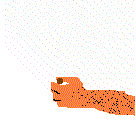
Heads or Tails: Who Wins?

Purpose: The flip of a coin has been the deciding factor in a million issues. In sports activities, it can sometimes provide the winning edge, in huge debates, it can resolve the direction the populace will head. In probability theory, heads and tails both have a 50% chance of turning up, however, this week, Scientific AmeriKen will put that to the test.
Hypothesis: The hypothesis of this experiment is that the pennies will flip according to the probability theory, and heads will come up 50% of the time, and tails will come up 50% of the time.
Equipment: 10 pennies, pen, paper, and a calculator optional.
Procedure: The experiment will require 1000 results, to rule out the possibility of a penny tilted towards heads or tails, ten pennies will be used. Place the pennies in a row of ten, pick the first penny up, flip, catch, and place it down (to eliminate possibility of penny falling on it's edge). Repeat with the other then pennies, record the results of all pennies, in their own separate columns. Repeat the process 100 times. observe results.
Observations: Pennies tossed 1000 times:
| Face of Penny | Number of Appearances | Percentage of Appearances |
| Heads | 478 | 47.8% |
| Tails | 522 | 52.2% |
Other Information:
| Face of Penny | Longest Streak | Best of Ten |
| Heads | 6 | 8-2 |
| Tails | 9 | 9-1 |
| Tails/Heads Ratio Per Ten | 5/5 | 6/4 | 7/3 | 8/2 | 9/1 | 10/0 |
| Number of Appearances | 22 | 49 | 20 | 8 | 1 | 0 |
| Number of Pennies With 50-50 Total | Highest Spread With One Penny |
| 1 | 40 Heads/60 Tails |
Conclusion: The Hypothesis in this experiment was proven wrong. Though tails was dominant over heads, the term "Tails never fails" can scarcely be applied here. Some other interesting information that has arisen from this experiment is the longest streak presented by tails of 9. The odds of achieving 9 tails in a row is roughly 2 to the ninth power or 512. Thus, making a 1 in 512 chance in achieving that goal.
The Following Playing Is H.P. Lovecrafts midi work "Cross".